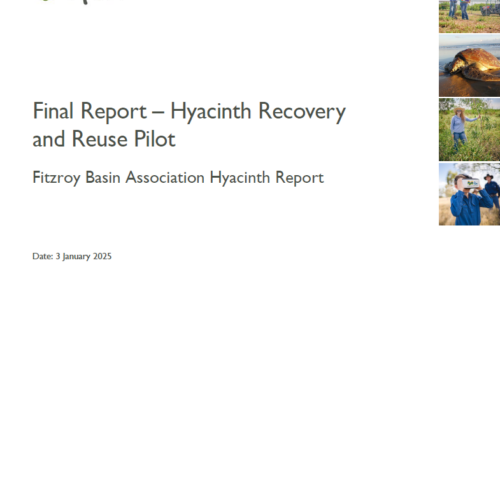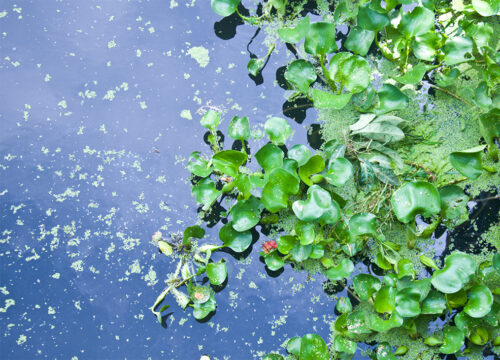
- Author Braden Mitchell - Fitzroy Basin Association
- Publish date 3 January 2025
- Type Report
- ISBN 978-1-922437-57-0
- Documents
- Water: Making Water Work program
Summary
Water hyacinth is an invasive aquatic weed that was introduced as an ornamental plant but once it entered waterways has a long-term impact due to the rate of growth, density of biomass and seed life. The Fitzroy River has seen rafts of weed up to 1km long that block recreational use, impact on irrigators and result in poor water quality when it enters the estuarine reach and dies. The continual supply of nutrient and ideal growing conditions provides an almost year-round growing season for the weed.
The weed is likely “here to stay” however the use of the weed as a vector for the removal of nutrient from the waterway and reuse of this nutrient in lieu of imported nutrient for cropping and grazing will contribute to improved water quality flowing to the Great Barrier Reef.
The aim of this project is to identify and evaluate methods for the beneficial reuse of water hyacinth in the Fitzroy River including effective removal, dewatering, utilisation as a nutrient and/or carbon source, understanding of the risks associated with a declared weed and estimation of potential scale up challenges. Answer longer term questions including, is there potential for the extraction of the weed to become a cost-neutral exercise, will the harvesting reduce the impacts of the weed on native flora and fauna, what are the factors that contribute to the regrowth of the weed / the location of the weed and modelling of the benefits to water quality.
Projects
Making Water Work : Integrating nutrient, waste and energy streams in agriculture development through hyacinth harvest and processing
Water hyacinth is an invasive aquatic weed introduced into the Fitzroy River in Central Queensland as an ornamental plant. However, once hyacinth enters waterways its long-term impact is significant due to the rate of growth, density of biomass and seed life. This project will seek to identify and evaluate methods for the beneficial reuse of water hyacinth in the Fitzroy River, including as a vector for the removal of nutrients from the waterway to improve water quality flowing to the Great Barrier Reef.


